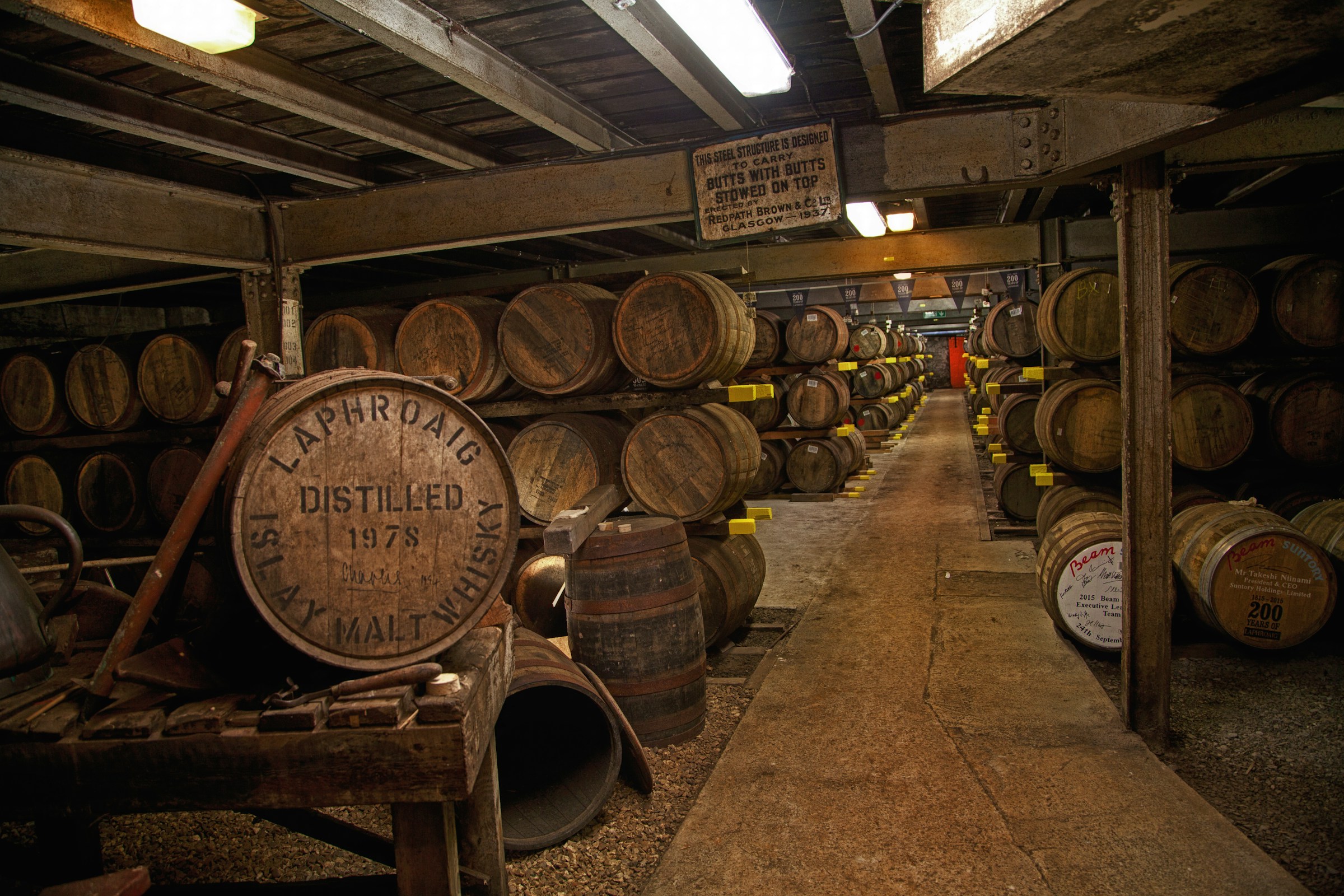Tamdhu distillery information
Founded in 1897 on the banks of the river Spey in the town Kncokando (also home to a distillery bearing the same name) in the Speyside region by a group of blenders led by William Grant, and operating under the name of Tamdhu Distillery Company Ltd. The distillery was built on the site of what was known as “The Smuggler’s Den”, due to high amounts of illicit distilling happening there. The spot was picked due to the quality of the water, so it seemed like a good spot to establish a legit distillery. The name Tamdhu stems from Gaelic, and translates into “little dark hill”. The distillery itself was designed by famous whisky architect Charles Doig, leading to a distillery that was efficient, modern and high tech when it opened.
Competitors were swift to launch a lawsuit against the young distillery in 1897, arguing that the usage of water for its distillation process, and the subsequent discharging of waste water after the distillation led to a drop of quality of the water in the River Spey. The lawsuit was resolved, and in 1899, the distillery was bought by Highland Distillers Co. Ltd (in which most of the blenders involved in Tamdhu also had interests). The same year,Dalbeallie Station was built nearby for the distillery. Production was drastically cut back in 1900 while the whisky industry recovered from the crisis started by the fraudulent Pattinson brothers who bankruptcy dragged countless distilleries down with them. Tamdhu closed between 1911 and 1913. Shortly after World War 1 it was distilling more than ever, but then was forced closed again between 1928 and 1947, while another recession and another World War wreaked havoc on Europe.
Reopened in 1948, things started to look up for Tamdhu. In 1950, the traditional malting floor were replaced with Saladin Box maltings (a mechanical way to malt barley). In 1966, the malting capabilities were doubled from 5 to 10 Saladin boxes, and in 1972, the amount of stills was doubled from two to four. The stills were converted in 1974 to use steam heating, with two additional stills bringing the total to six in 175. In the same year, the old railway station was transformed into a visitor centre.
In 1999, the distillery sold to the Edrington Group (owners of The Famous Grous, Cutty Shark, The Macallan and Highland Park) in 2004. During the time they owned the distillery, the Saladin maltings supplied barley to their other distilleries as well. However, in 2009, the distillery was closed by Edrington Group. Luckily, hope was not lost for Tamdhu, as in 2011, the distillery was sold to Ian MacLeod, who silently resumed production in 2012, and relaunched the brand in 2013.
Tamdhu whisky
Most of the spirit produced at Tamdhu used to find its way into blends like Cutty Shark, J&B, and The Famous Grouse, with relatively little ending up as official bottlings. When they did, it was a non-age statement whisky. This changed, however, after Ian Macleod took over.
There currently are the following official bottlings available:
- Ten Year Old; matured exclusively in Sherry Casks
- Ten Tear Old Limited Edition; matured in first fill Sherry casks.
Distillery info:
| Name | Tamdhu |
| Region | Speyside |
| Logo |  |
| Status | Active |
| Founded | 1897 |
| Water source | Tamdhu Spring |
| Owned by | Ian MacLeod Distillers |
| Address |
Tamdhu distillery +44 (0)1340 – 81 02 21 |
| Visitor centre | Yes |
| Website | http://www.tamdhu.com/ |
| http://www.twitter.com/tamdhuwhisky | |
| http://www.facebook.com/tamdhuwhisky | |
| Community | N/A |
| Map |
Distillery Setup:
Component |
Capacity |
Quantity |
|---|---|---|
| Mash tun | 12 tonnes | 1 |
| Washback | 50,000 litres | 9 (Oregon pine) |
| Wash still | 22,503 litres | 3 |
| Spirit Still | 18,639 litres | 3 |
| Expected yearly output in LPA (Litres of pure alcohol) | 4,500,000 |
